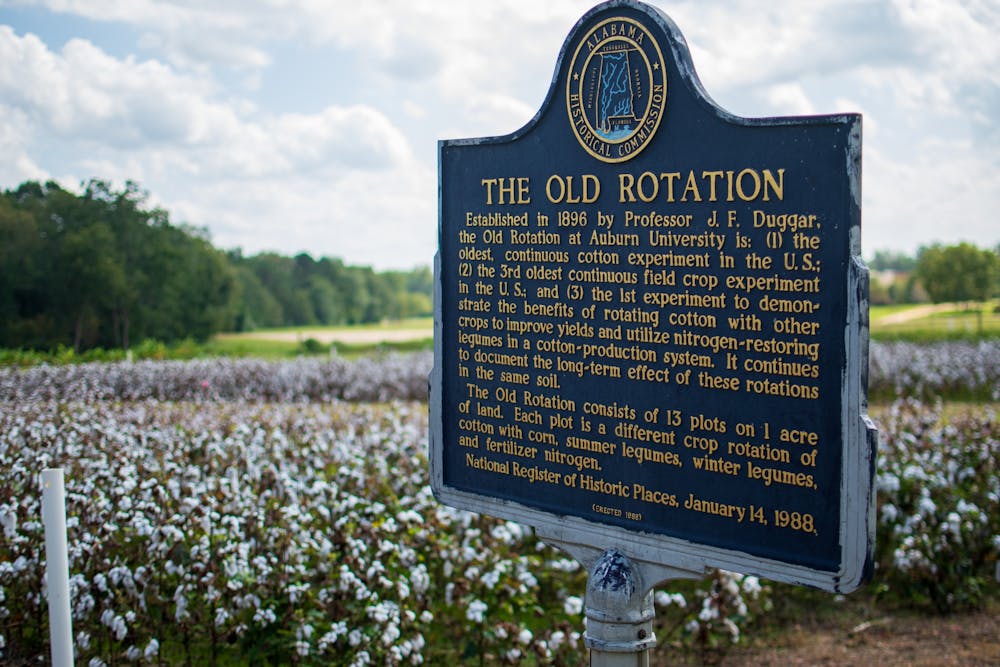While most people think football season is the kick-off for fall, the team at the Old Rotation begins fall with the crop harvest.
The Old Rotation was established in 1896 and is the world’s oldest continuous cotton experiment. This season, corn has already been harvested, and cotton and soybeans will be next.
Each crop grown has its own “harvest ready” characteristic.
“For cotton, we look at the number of bolls open,” said Audrey Gamble, a soil scientist for the Alabama Cooperative Extension System and Auburn University.
After looking at the bolls, she said they defoliate the leaves, a process which Gamble describes as “spraying the crop to take the leaves off the cotton.”
They sprayed the crop last week. Once the leaves are off, they bring in equipment from the E.V. Smith Research Center to start harvesting.
Gamble said the cotton harvest is expected to start the week of Sept. 28, but that is all dependent on the weather. Ideally, the weather needs to be sunny and dry with a slight breeze.
To harvest cotton, it takes special equipment.
“At cotton harvest, we will use our refurbished one-row cotton picker,” she said.
It will only take a few hours to do this because the Old Rotation is a small plot. However, operating a cotton-picker can take time.
“There is not a more expensive or more complicated machine,” said Steve Brown, a cotton agronomist at Auburn University.
The picker goes through the crop, sticks the cotton, pulls the lint from the plant and puts it into a basket. After the harvest is done, the cotton will eventually be taken to a cotton gin.
“Because it is a smaller amount, we will have E.V. Smith Research Center take it to be included with some of their cotton,” Gamble said.
The crop will be taken to Milstead Gin in Tallassee, Alabama.
When it isn’t harvesting season at the Old Rotation, there is still work being done. Caretakers have switched to less tillage, so they plant a cover crop. This year, the winter cover crop will be Clemson Clover.
“You’ll see that coming up in November and December,” Gamble said.
By spring, the clover will begin to bloom.
The Old Rotation has deep roots at Auburn University. In 1896, J. F. Duggar, the director of the Auburn University Agricultural Experiment Station and the Alabama Cooperative Extension Service, used the land to demonstrate cotton and corn production by planting a winter cover crop and rotating the summer crops.
“There should be something on the field to cover it when cash crop is not being planted,” Gamble explained.
Ideas from Duggar’s experiment are still practiced today. The land continues to be used for research, demonstration and learning.
“We have students who have never seen cotton growing until they go to the Old Rotation,” Gamble said.
She said she enjoys enhancing learning opportunities for students by giving them hands-on experience in the field.
As Duggar said, “Alabama agriculture fields will come into her own when her fields are green in the wintertime.”
Do you like this story? The Plainsman doesn't accept money from tuition or student fees, and we don't charge a subscription fee. But you can donate to support The Plainsman.





